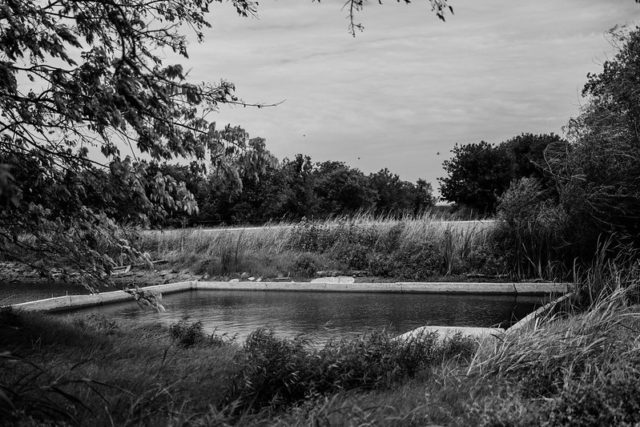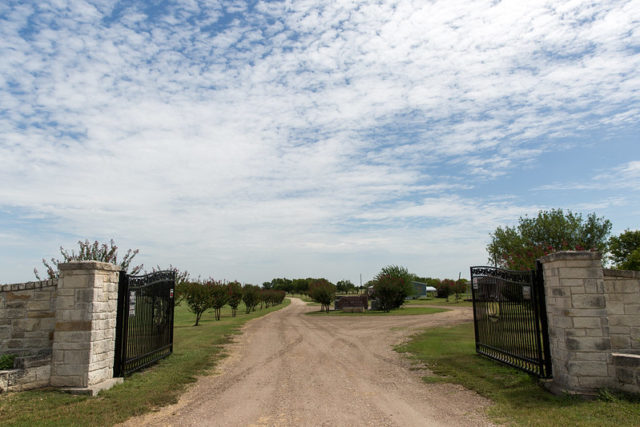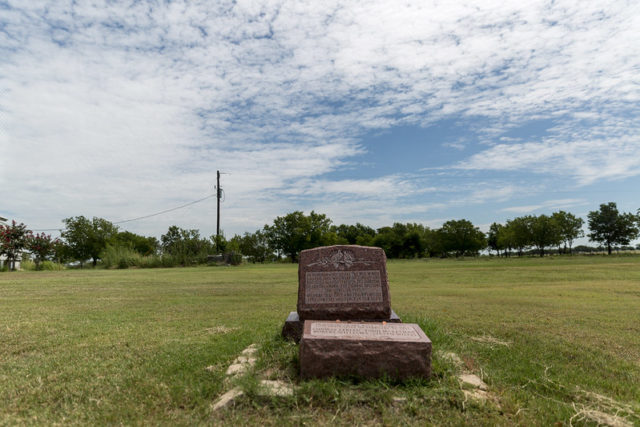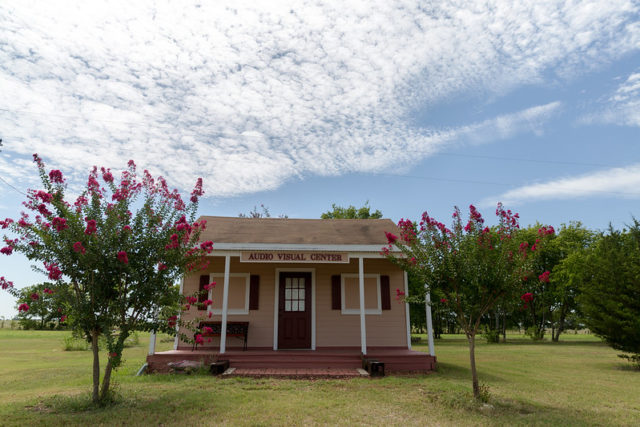The Mount Carmel Center was a large compound on the outskirts of Waco, Texas that housed the Branch Davidians. The location was named after Mount Carmel, a Biblical mountain in northern Israel, and was the site of the deadly Waco siege in 1993.
History of the Branch Davidians
The Branch Davidians were founded by Bulgarian immigrant Victor Houteff. The religion was a spin-off of the Seventh-day Adventist Church, and after organizing in California resettled just outside of Waco. It was believed Mount Carmel would be the center of the new divine kingdom following the impending apocalypse, which all members would survive.



Houteff’s death in 1955 splintered the group. After his death, his widow, Florence Houteff, began selling off parcels of property to Waco, as the city was beginning to expand around the edges of the community. The last area was sold in 1957, and not long after, Florence purchased a new 941-acre property which she dubbed “New Mount Carmel.”


In 1959, one of Houteff’s followers, Benjamin Roden, claimed he was told by God to continue his former leader’s work. A selection of followers chose to follow him, and he remained the community’s leader for decades, until the arrival of Vernon Howell – AKA David Koresh.
Vernon Howell joins the sect
Vernon Howell arrived at the Mount Carmel Center compound in 1981 and began claiming to have the ability to see prophecies. His power increased within the community, causing him to butt heads with Roden’s son, George. There was a struggle for power, which George lost after he was imprisoned for the murder of another rival.



Not long after, Howell changed his name to David Koresh and began leading the members of the Branch Davidians. He claimed he was a messiah and that any children born to him were sacred. This allowed him to engage in multiple “spiritual marriages” with women, some of whom were underage. He gave birth to at least 13 children during this time, and those not taken on as wives reported instances of sexual abuse at his hands.
A deadly 51-day siege
One thing Koresh tried to keep hidden at the Mount Carmel Center compound was a trove of illegal firearms. The federal government caught wind of the cache, and made steps to arrest Koresh and seize the weapons.



On February 28, 1993, over 70 agents with the Bureau of Alcohol, Tobacco, Firearms and Explosives (ATF) attempted to execute a warrant on the compound and arrest some of its members. What ensued was a firefight that left four ATF agents and six Branch Davidians dead, and wounded an additional 16 agents.


The firefight launched a 51-day standoff between federal agents and the Branch Davidians. The FBI came in to relieve the ATF, with nearly 900 law enforcement officials descending upon the compound. However, they were up against a group that had prepared for such an event by stockpiling enough food to last them weeks, as well as gas masks and firearms.


Within the first five days of the standoff, 21 children were freed from the compound and transported to the Methodist Children’s Home in Waco. To try and prompt the remaining members to leave, the FBI played loud music 24/7 to induce sleep deprivation and engaged Koresh in hours of negotiations, all of which failed.



Things came to a head on April 19, 1993, when the FBI threw tear gas into the compound and used military tanks to break through its barriers. Fires were lit during the assault (it’s disputed by which side), and when they were eventually put out, the majority of the Branch Davidians were deceased, some from smoke inhalation and others from gunshot wounds. Among those dead was David Koresh, who had shot himself with a rifle.
After the siege
Following the siege, the Branch Davidians largely vanished. However, in the years that followed some of its members moved back to the Mount Carmel Center compound. A second group settled on the site, erected a church atop the remains of the original compound and laid plaques to commemorate those members who had perished. Monuments dedicated to the ATF agents who died were also erected.


In 1998, three buildings at the compound were destroyed by a “suspicious” fire. They were the home of Amo Bishop Roden, wife of George Roden, and two museums that had been used to record the group’s history.



More from us: Murphy Ranch: The ruins of a mysterious 1930s compound in Los Angeles
Visitors can see the foundation where the original compound building sat, as well as its pool, which remains to this day. There is also an old basketball court, as well as barbed wire used to prevent people from fleeing the property.
